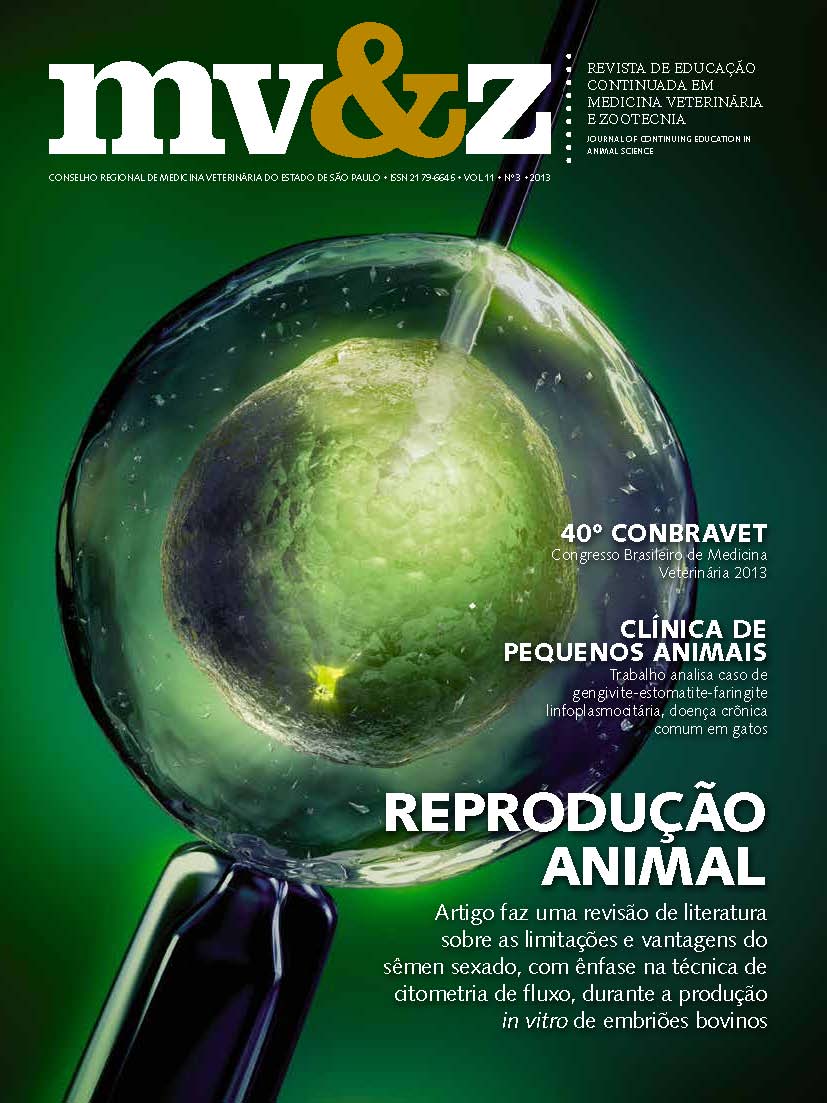Resumo Com o advento da sexagem espermática a escolha do sexo da prole se tornou uma grande vantagem, principalmente para os criadores de gado leiteiro, que necessitam de novas matrizes para a manutenção do seu rebanho e para os criadores de gado de corte
Main Article Content
Abstract
The advent of sex-sorting-sperm sex selection of offspring became a great advantage, especially for dairy farms, which need new heifers for maintenance of his herds, and for beef cattle breeders, who crave more males for meat production. Currently, the only known technique capable of separating the populations of X and Y mammals sperm cells with efficiency and purity above 90% is flow cytometry. The best way of using sexed semen is in vitro fertilization, due to the small number of available sperm after sexing. Several factors can influence the results of in vitro embryos production using bovine sexed semen; among them there are the low rates of fertilization, cleavage, blastocyst, pregnancies, partially sperm capacitation, diluted semen samples and variation among bulls. Several studies have been conducted in order to assess the genetic and epigenetic alterations resulting from the use of sexed semen in the production of bovine embryos in vitro. Therefore, this paper aims to conduct a literature review on the limitations and advantages of using sexed semen, with emphasis on the technique of flow cytometry, during in vitro embryo production in cattle.
Article Details
1. Autores mantém os direitos autorais e concedem à revista o direito de primeira publicação, com o trabalho licenciado sob a Creative Commons Atribuição-NãoComercial-SemDerivações 4.0 Internacional
2. Autores têm autorização para assumir contratos adicionais separadamente, para distribuição não-exclusica da versão do trabalho publicada nesta revista (ex.: publicar em repositório institucional ou como capítulo de livro), com reconhecimento de autoria e publicação inicial nesta revista.
3. Autores têm permissão e são estimulados a publicar e distribuir seu trabalho online (ex.: em repositórios instituicionais ou na sua página pessoal) a qualquer ponto antes ou durante o processo editorial, já que isso pode gerar alterações produtivas, bem como aumentar o impacto e a citação do trabalho publicado (Veja O Efeito do Acesso Livre);
